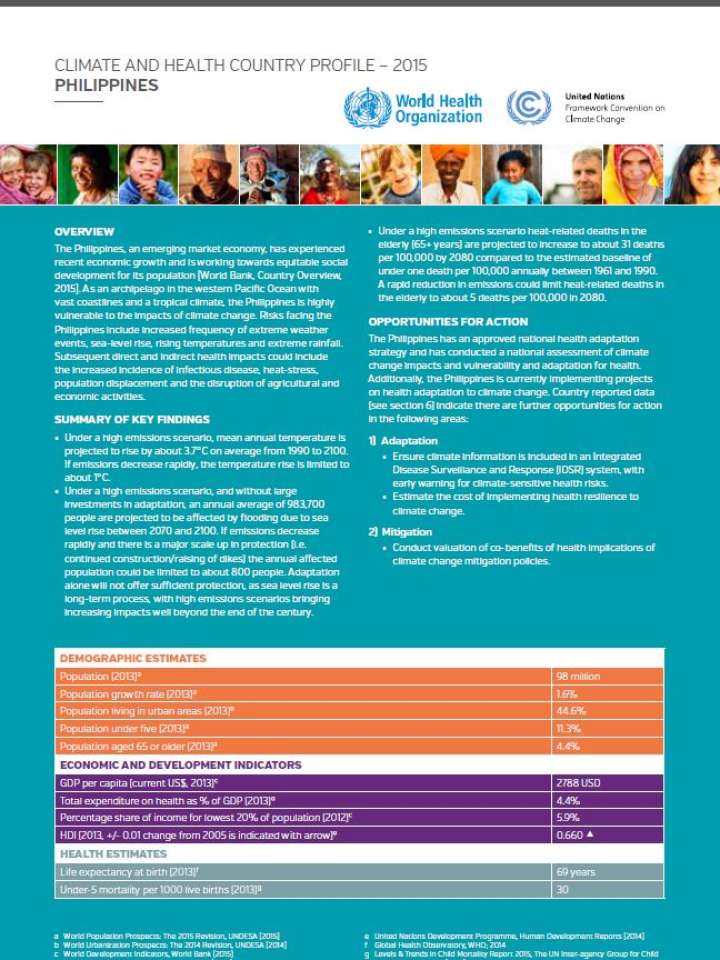Climate and health: country profile 2015: Philippines
This is a health and climate change country profile for the Philippines. The Philippines, an emerging market economy, has experienced recent economic growth and is working towards equitable social development for its population. As an archipelago in the western Pacific Ocean with vast coastlines and a tropical climate, the Philippines is highly vulnerable to the impacts of climate change. Risks facing the Philippines include increased frequency of extreme weather events, sea-level rise, rising temperatures and extreme rainfall. Subsequent direct and indirect health impacts could include the increased incidence of infectious disease, heat-stress, population displacement and the disruption of agricultural and economic activities.
Summary of key findings:
- Under a high emissions scenario, mean annual temperature is projected to rise by about 3.7°C on average from 1990 to 2100. If emissions decrease rapidly, the temperature rise is limited to about 1°C.
- Under a high emissions scenario, and without large investments in adaptation, an annual average of 983,700 people are projected to be affected by flooding due to sea level rise between 2070 and 2100. If emissions decrease rapidly and there is a major scale up in protection (i.e. continued construction/raising of dikes) the annual affected population could be limited to about 800 people. Adaptation alone will not offer sufficient protection, as sea level rise is a long-term process, with high emissions scenarios bringing increasing impacts well beyond the end of the century.
- Under a high emissions scenario heat-related deaths in the elderly (65+ years) are projected to increase to about 31 deaths per 100,000 by 2080 compared to the estimated baseline of under one death per 100,000 annually between 1961 and 1990. A rapid reduction in emissions could limit heat-related deaths in the elderly to about 5 deaths per 100,000 in 2080.
Explore further
